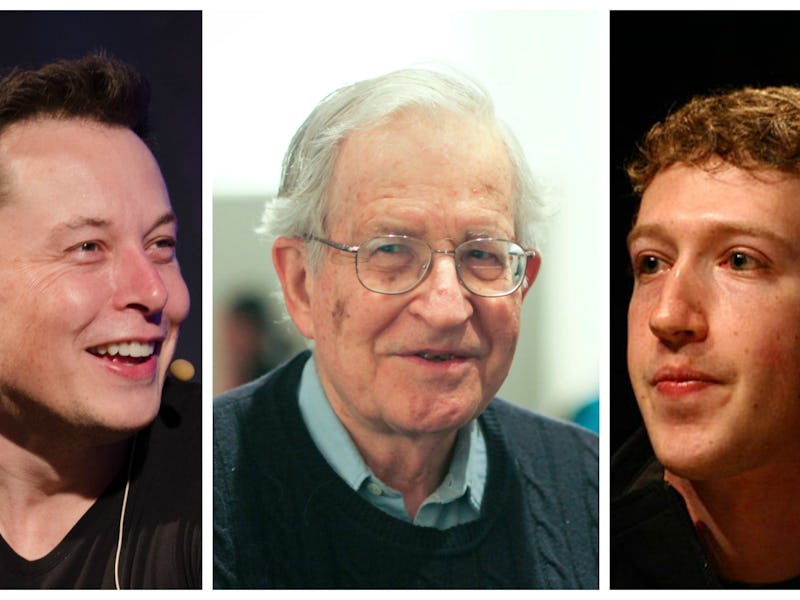Noam Chomsky says Facebook and Musk Projects Share 3 Problems
Developing the tech is hard, but we may not want them to succeed.

Building technology to connect your brain to a computer sounds like science fiction, but at the end of April both Facebook and Elon Musk have announced projects to make this a reality, to connect our brains to the cloud.
Inverse asked Noam Chomsky about his pioneering research on thoughts and language and the challenges faced by the researchers in Facebook’s secretive F8 building and at Neuralink, Musk’s newly announced company. Although the approaches of the Facebook project and Neuralink pose slightly different scenarios, there are three main problems that both need to overcome: how we think, how to tap into our thoughts, and how to handle the inevitable backlash.
“These are hard problems, you can’t just wave our hands at them,” Chomsky tells says.
Challenge 1: How do you even think?
“First of all, you’d have to understand how the brain is doing it,” says Chomsky. “That’s preliminary. How is the brain constructing thoughts? We have barely any understanding of that.”
We have no idea because, as far as we know, humans are the only animals that think. And since it’s not really ethical to perform invasive brain experiments on humans (and it’s debatable in animals anyway), thoughts are hard to study scientifically. The fact that it can only be studied in people presents a big problem for Musk and Zuckerberg to overcome.
Challenge 2: What kind of tech are we talking about, exactly?
“You would have to have some kind of technology, which doesn’t at all exist, to tap what the brain is doing when it’s constructing thoughts,” says Chomsky. “We’re nowhere near even imagining what kind of technology that would be, even for much simpler things like how do you remember what you saw five minutes ago.”
Functional magnetic resonance imaging measures and maps brain activity. It is non-invasive.
To study things like the neurological pathways of the vision system, researchers implant electrodes into the brains of animals. While this is done as humanely as possible, it’s just not something that can be done in people. Things like fMRIs and the external electrode controls just aren’t powerful enough to image the brain on the scale necessary. This means Facebook and Neuralink have to invent brain imaging tech that is safe enough to be used in people basically from scratch. It sounds like both companies have a general direction they’re trying, but it’s something researchers have been working on for decades to no avail.
Elon Musk wants to develop a BMI, or "brain-machine interface' to help "with certain severe brain injuries (stroke, cancer lesion, congenital) in about four years," he said this spring.
Challenge 3: Do we actually want to let companies read our minds?
“It would be better if it was done by governments, because at least in the case of governments, the population has some participation in what happens,” says Chomsky. “To the extent that a society is democratic, you can participate in decisions that the government makes. In the case of a private corporation, they’re not accountable to the public except through government regulations.”
Companies have access to a huge amount of data about our preferences already, says Chomsky. If Facebook was able to see your thoughts it opens up another, even more dangerous route. In his mind, it’s a technology as dangerous as nuclear weaponry. Despite the technological progress offered by the development of a mind-reading device, just like nukes, we’d be better off if it didn’t exist, he says.